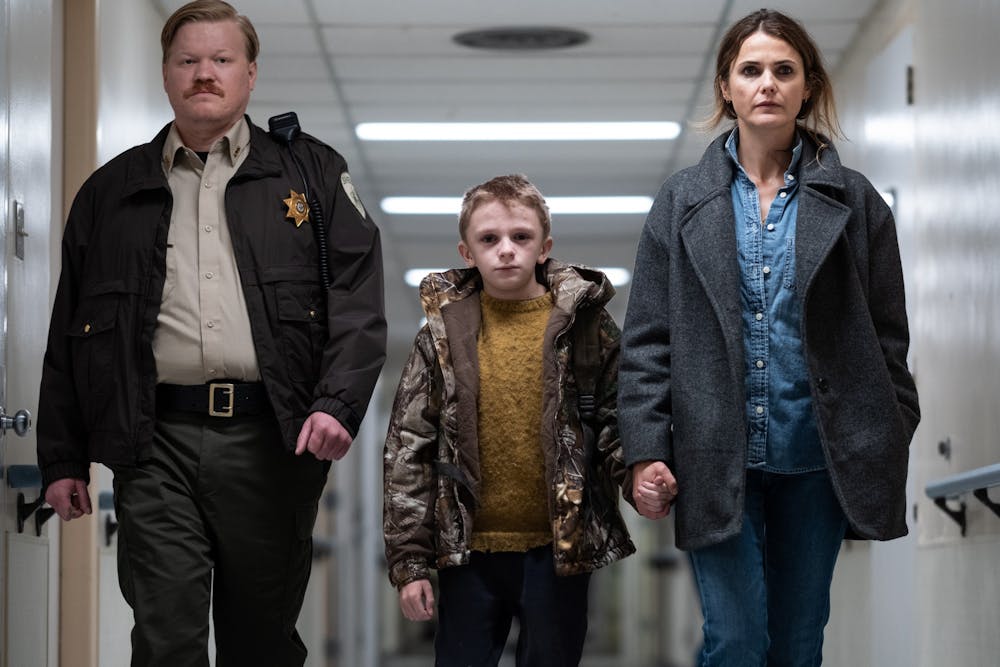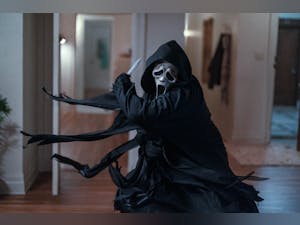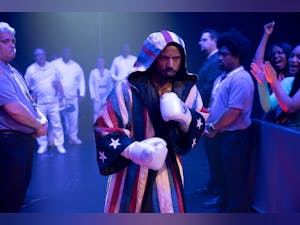From: Silver Screen
REVIEW: ‘Antlers’ is a morally questionable but undeniably grisly experience

Scott Cooper’s first foray into horror, “Antlers,” aspires to blend First Nation folklore with commentary on trauma and abuse. Unfortunately, the film’s most harrowing element is its facile attitude towards its themes.
“Antlers” comes to us amid a recent resurgence in folk horror spearheaded by the likes of A24 with films such as “Midsommar” and “The Witch.” In this latest addition to the genre, the mythology of choice is that of the Wendigo, an incessantly malevolent and cannibalistic creature that can inhabit the bodies of unsuspecting victims, causing them to commit heinous acts of violence.
Set in a small Oregon town, “Antlers” tells the story of Julia Meadows (Keri Russell), a middle-school teacher who becomes increasingly involved in the life of her most troubled student, Lucas (Jeremy T. Thomas). After noticing clear cries for help in some concerning drawings that she finds inside Lucas’ desk, she asks her sheriff brother, Paul (Jesse Plemons), if he knows anything about her student’s home situation. Paul tells her that Lucas’s father, Frank (Scott Haze), is a drug addict with a pattern of neglect and abuse toward his sons. But because their mother died when they were young and they have no nearby family, the local judicial system is apprehensive toward taking custody away from Lucas’ father. As Lucas’ behavior grows increasingly concerning, it is revealed that he is taking care of Frank and his brother (Sawyer Jones), who live in the family’s attic, and that his father’s addiction has turned into something more sinister: possession. Throughout the rest of the film, Julia and Paul attempt to save Lucas from Frank and the evil Wendigo spirit.
One of the driving themes throughout the film is child abuse. Early on, an ambiguous nightmare sequence reveals that, much like Lucas is now, Julia and her brother were abused by their father when they were children. This causes Julia to feel a great moral obligation to save Lucas from Frank as she doesn’t want Lucas to go through the same situation that she did. As the movie goes along, shared trauma continues to be the primary catalyst for Julia’s interest in her student’s plight.
And yet, there’s hardly any meaningful exploration of the themes surrounding trauma caused by abuse beyond this surface-level acknowledgment that it's generally damaging to the victim. Instead, trauma is utilized primarily as a plot device meant to further the story and build tension rather than as an actual focus of the film. While the movie’s treatment of emotional damage can’t be directly construed as harmful, “Antlers” feels dismissive by devoting so much screen time to classic horror movie tropes in place of such a poignant topic.
Likewise, the film’s point of view towards drug abuse is equally problematic. Frank, an obviously flawed but deeply troubled character, is quite distinctly the primary human villain in “Antlers.” That he is both the only portrayed victim of the opioid epidemic as well as the Wendigo's primary vessel for committing atrocities sends an immensely troublesome message about addiction. Rather than opting for a nuanced approach, Cooper’s movie ultimately takes the implied position that people who struggle with substance dependencies are nothing more than instruments of evil beyond redemption.
Though the film is at times rather reckless in its social analysis, it undoubtedly delivers on its promises of horror. In a movie that’s as gory and reliant on supernatural visuals as “Antlers,” the production value needs to be on point, and that’s exactly what the film does best. Morbid depictions of anthropomorphism are a trademark of producer Guillermo del Toro, so it’s no surprise that the physical deer-like manifestation of Wendigo is flawlessly brought to life. The creature’s gurgling, blood-curdling shrieks are executed to terrifying perfection with impeccable sound design.
“Antlers” also knows when to wear its influences on its sleeve in moments of climactic horror. In the penultimate battle scene between Julia and the now physically-evinced Wendigo, a variety of references are made to “The Silence of the Lambs.” During the showdown, the creature wears a very Buffalo Bill-esque (Ted Levine) mask of human flesh on its face. The lighting of the scene in "Antlers," too, is reminiscent of that in which Clarice Starling (Jodie Foster) attempts to hunt down Buffalo Bill in the dark. Foregoing the original green color palette of the older film, “Antlers” opts for a bleakly illuminated red backdrop that aptly evokes all of the bloodshed from the previous scenes, adding an enormous amount of tension through pensive visual storytelling.
While Cooper’s latest film strives to be a meaningful addition to folk horror on the silver screen, its inability to substantively engage with its subject matter dramatically deflates its potentially profound impact. Moviegoers seeking the thrills and chills of jumpscares and monsters à la del Toro will be satisfied on the whole with “Antlers.” But as the discussion around historically overlooked topics such as trauma and emotional violence gets more commodified than contributed to in an increasing number of horror films, the sins that this movie commits are far more frightening than the terrors that it devises.
“Antlers” was released in theaters on Friday.




